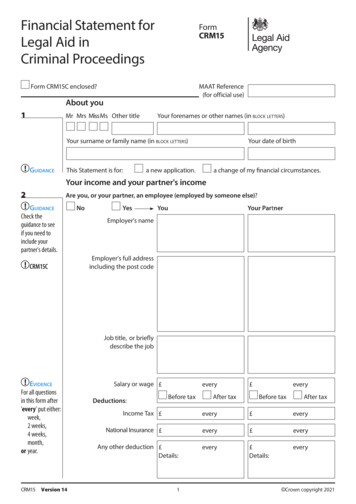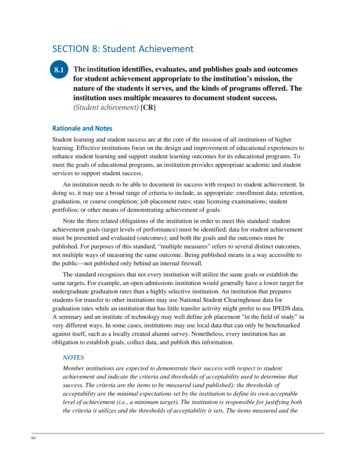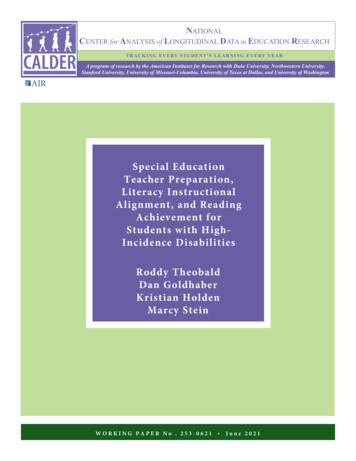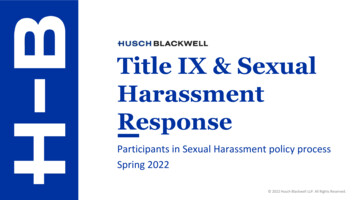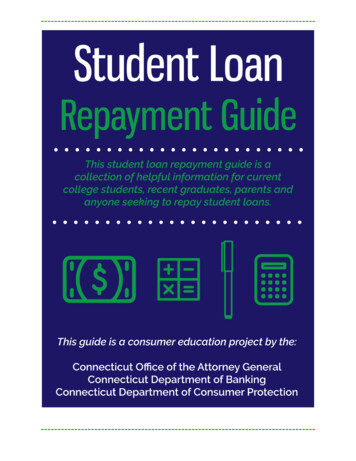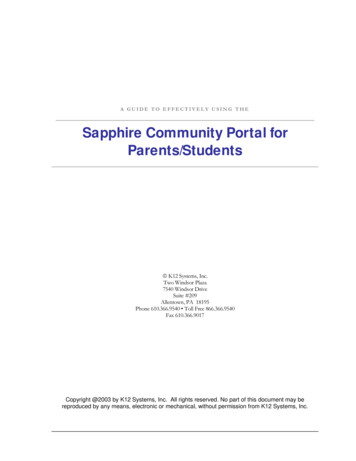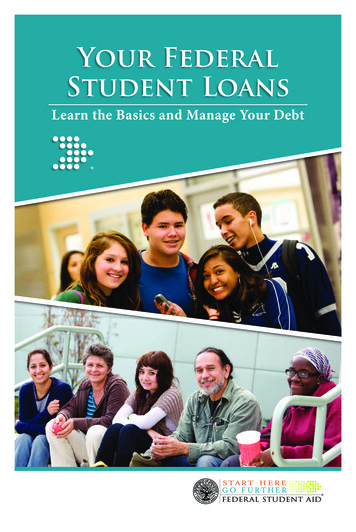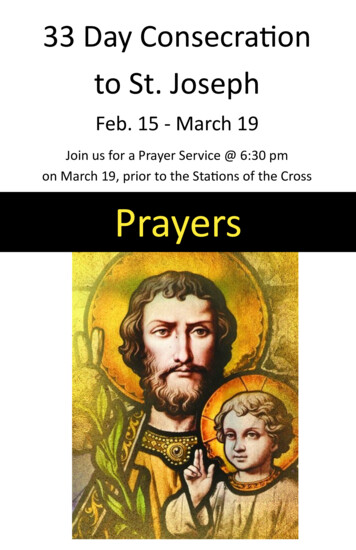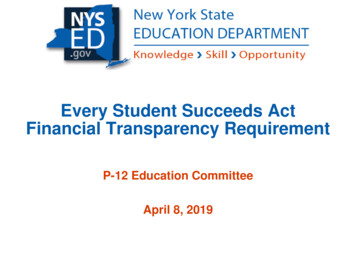
Transcription
Every Student Succeeds ActFinancial Transparency RequirementP-12 Education CommitteeApril 8, 2019
What is the ESSA FinancialTransparency Requirement?ESSA requires that beginning with data from the2018-2019 School Year, State Report Cards mustinclude:“The per-pupil expenditures of Federal, State,and local funds, including actual personnelexpenditures and actual nonpersonnelexpenditures of Federal, State, and local funds,disaggregated by source of funds, for each localeducational agency and each school in the Statefor the preceding fiscal year.”2
What is the ESSA FinancialTransparency Requirement?Districts will report 2018-19 data in early 2020.Reporting will be on actual expenditureso where possible spending will need to reflect,in full, in the school where the spendingoccurredAllowance for truly district-wide expenditures,such as the Superintendent’s salary, to beidentified at the district level.3
What is the State FinancialTransparency Requirement?Beginning with the 2018-19 School Year budgetinformation, 76 districts were required to submit a formdeveloped by the Division of the Budget.For the 2019-20 School Year, 306 districts will berequired to submit a report. In 2020-21, all schooldistricts will submit.In 2019, selected districts with “underfunded high-needschools”, as defined by DOB, will be required tosubmit a report specifying how such districteffectuated appropriate funding for the underfundedhigh-need schools.4
Why is the ESSA requirementimportant?It is a federal requirementSupports:o Transparencyo Equityo Accountabilityo Local decision-makingo Confirmation of best practices and opportunities forimprovements5
Why should we look at per pupilexpenditures?Per-pupil comparisons are an additional tool fordistrict leaders to examine their practices andanswer some key questions:o Do actual spending practices align with stated districtgoals?o Is the district using its resources equitably?o Are there areas where over- or underspending can beidentified and reprogrammed?6
Why should we look at per pupilexpenditures?However:Per-pupil comparisons also present challenges thatSED will need to consider in developing guidance:o Are differences across schools, districts, or program areasproperly contextualized?o What role will this data play in audits by the Office of theState Comptroller?7
Potential Implementation ChallengesSED will work with stakeholders to overcome somechallenges of which we are already aware: Budget accounting at the school level Developing understanding in local communitiesabout what this data does, and does not, mean Concern about accuracy and internal controls forfuture audits8
SED Implementation Process Outreach Beginning Spring 2017: Participated in monthlyvideo conferences with a multistate working groupsponsored by the Edunomics Lab and CCSSO Fall/Winter 2017: Preliminary feedback sessions withsuperintendents, business officials, and school boardmembers April 2018: Met with Title I Committee of Practitioners9
SED Implementation Process Outreach Spring/Summer 2018: Began ongoing meetings withofficials from the Big 5 City School Districts, includingin-person meetings in NYC (twice), Rochester, andYonkers Summer 2018: Feedback from CCSSO/Edunomicson state transparency form Fall 2018: Conducted eight regional meetings acrossthe state to present requirements and receivefeedback from superintendents, business officials,and school board members (hosted by BOCES andlocal school districts)10
SED Implementation Process Outreach Regional meeting locations: Albany/Saratoga (joint locations)Saranac Lake/Watertown (joint locations)Monroe-WoodburyLong IslandSyracuseBataviaBuffaloElmiraParticipants also completed questionnairesrequesting feedback on report templates,accounting decisions, and additional contextualinformation11
SED Implementation Process Outreach Fall/Winter 2018: Met with additional stakeholdergroups, such as Alliance for Quality Education (AQE)and the Education Trust-New York Winter 2018/Spring 2019: Convened a workinggroup of business and communications officials tobegin developing guidance document Spring/Summer 2019 (planned): Will provide schooldistricts and other stakeholders an opportunity toprovide feedback to preliminary guidance and reporttemplate before it is made “final”12
Next Steps (Anticipated) April 2019: Finalize internal development May 2019: Release preliminary guidance May/June 2019: Provide a public comment period forthe field to review preliminary guidance and submitfeedback to the department Summer 2019: Release final guidance anddevelop/announce submission process Fall 2019: Open submission period for school districtsto submit data March 1, 2020: Final reports due and published onReport Cards13
Thank You14
2018-2019 School Year, State Report Cards must include: "The per-pupil expenditures of Federal, State, and local funds, including actual personnel expenditures and actual nonpersonnel expenditures of Federal, State, and local funds, disaggregated by source of funds, for each local educational agency and each school in the State
